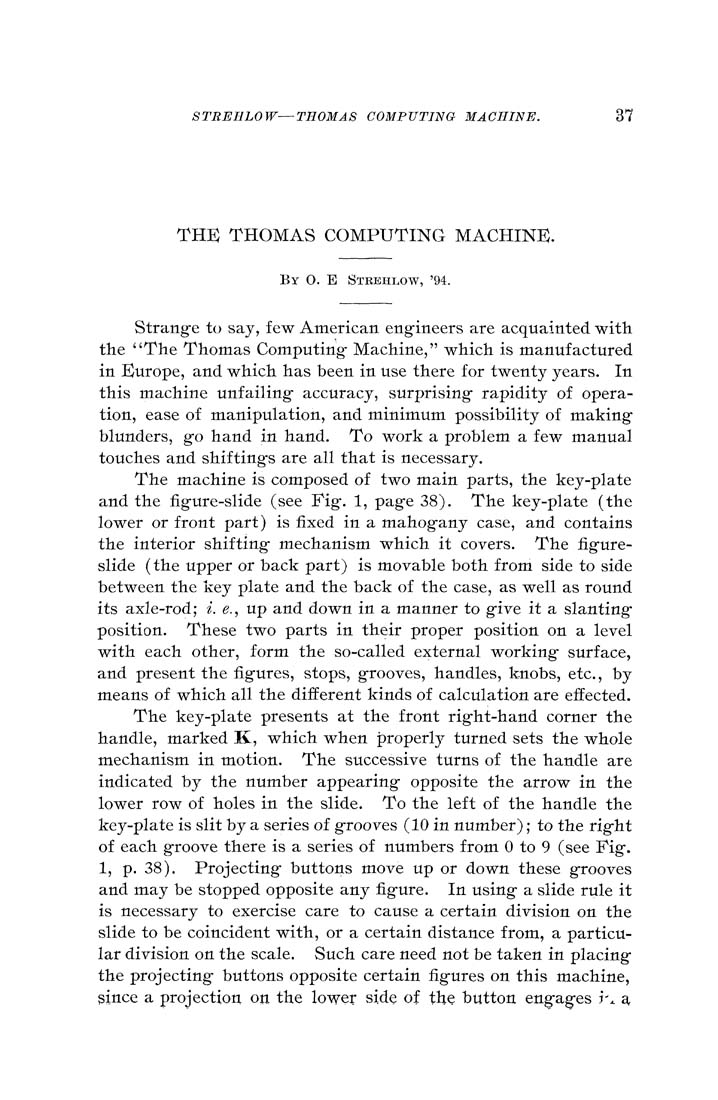STREHLOW—THOMAS COMPUTING MACHINE. 37
THE THOMAS COMPUTING MACHINE.
By O. E Strehlow, '94.
Strange to say, few American engineers are acquainted with
the "The Thomas Computing Machine," which is manufactured
in Europe, and which has been in use there for twenty years. In
this machine unfailing accuracy, surprising rapidity of opera¬
tion, ease of manipulation, and minimum possibility of making
blunders, go hand in hand. To work a problem a few manual
touches and shiftings are all that is necessary.
The machine is composed of two main parts, the key-plate
and the figure-slide (see Fig. 1, page 38). The key-plate (the
lower or front part) is fixed in a mahogany case, and contains
the interior shifting mechanism which it covers. The figure-
slide (the upper or back part) is movable both from side to side
between the key plate and the back of the case, as well as round
its axle-rod; i. <?., up and down in a manner to give it a slanting
position. These two parts in their proper position on a level
with each other, form the so-called external working surface,
and present the figures, stops, grooves, handles, knobs, etc., by
means of which all the different kinds of calculation are effected.
The key-plate presents at the front right-hand corner the
handle, marked K, which when properly turned sets the whole
mechanism in motion. The successive turns of the handle are
indicated by the number appearing opposite the arrow in the
lower row of holes in the slide. To the left of the handle the
key-plate is slit by a series of grooves (10 in number); to the right
of each groove there is a series of numbers from 0 to 9 (see Fig.
1, p. 38). Projecting buttons move up or down these grooves
and may be stopped opposite any figure. In using a slide rule it
is necessary to exercise care to cause a certain division on the
slide to be coincident with, or a certain distance from, a particu¬
lar division on the scale. Such care need not be taken in placing
the projecting buttons opposite certain figures on this machine,
^ince a projection oix the lower side of the button engag*es j\ a,
|








